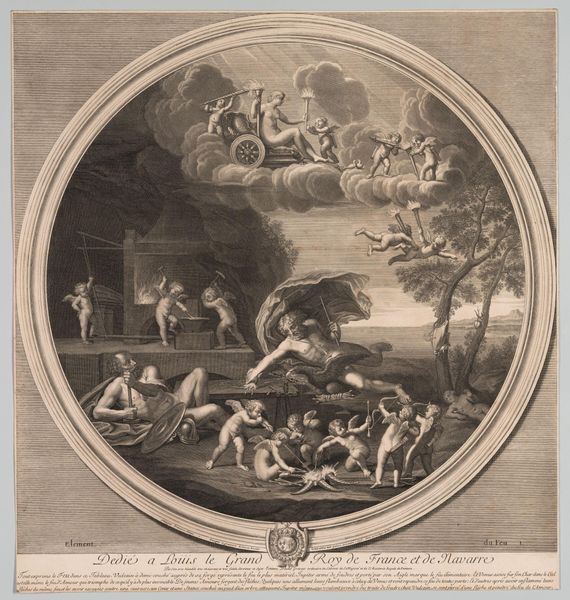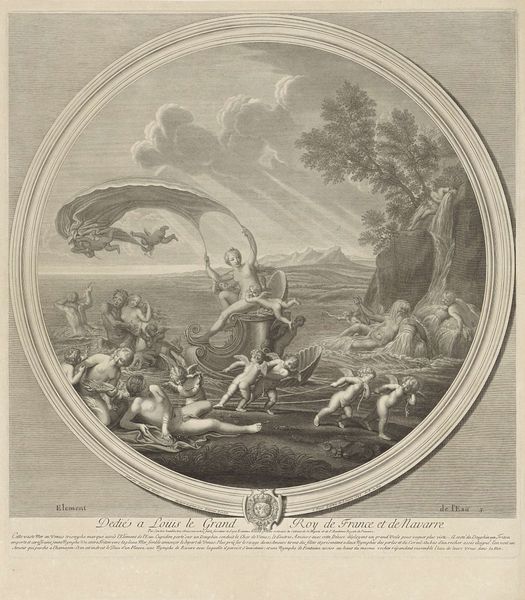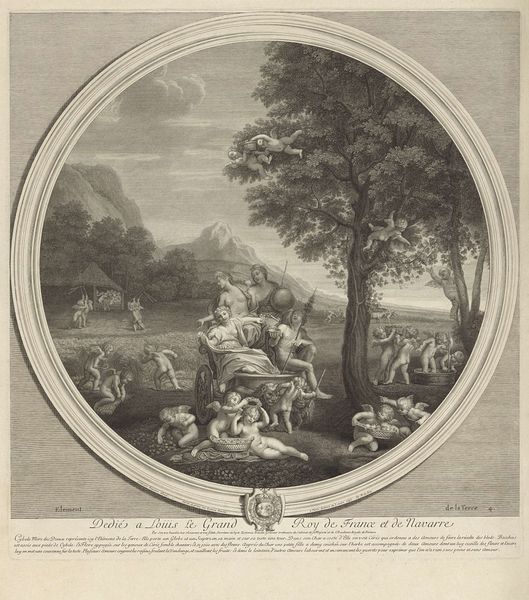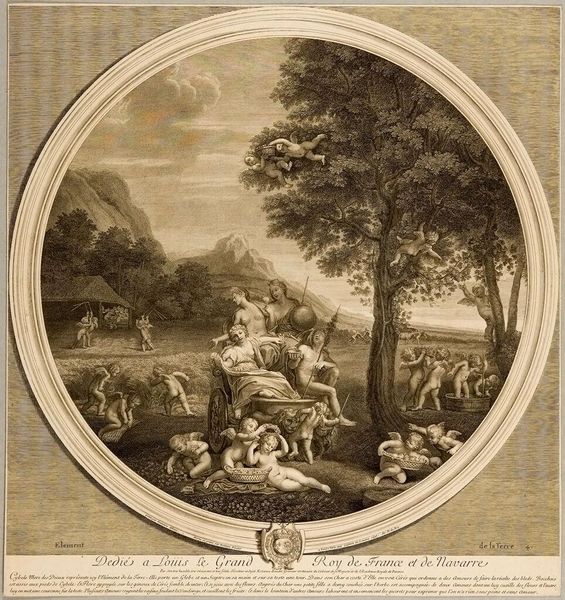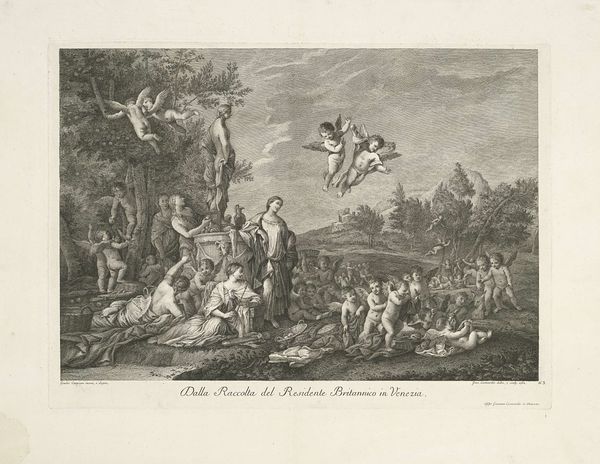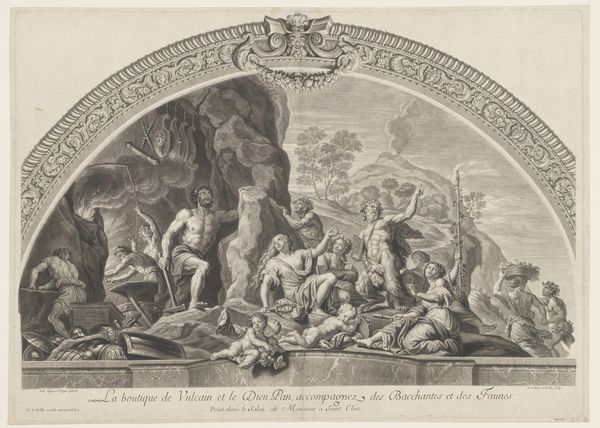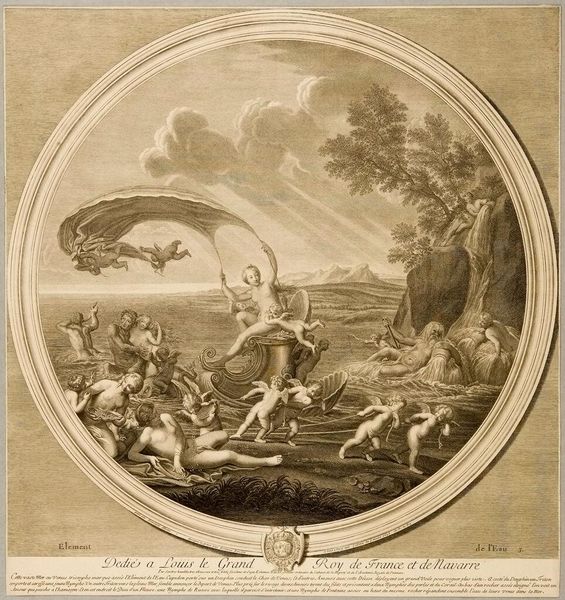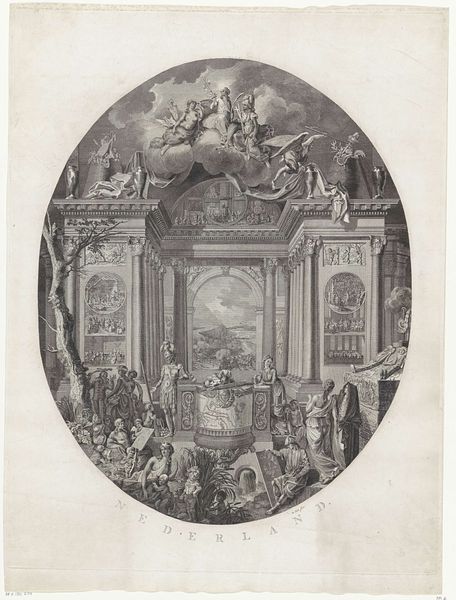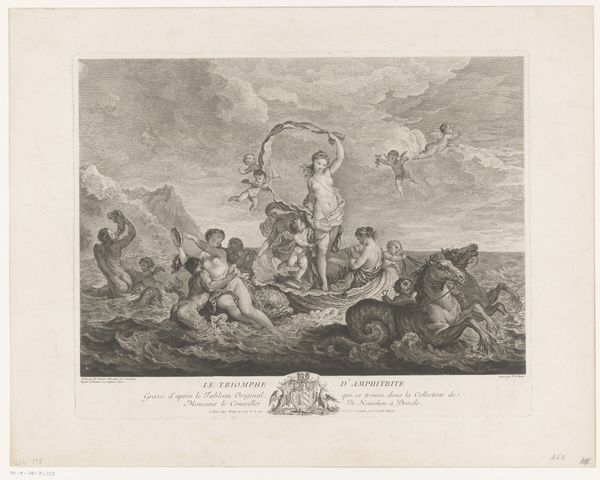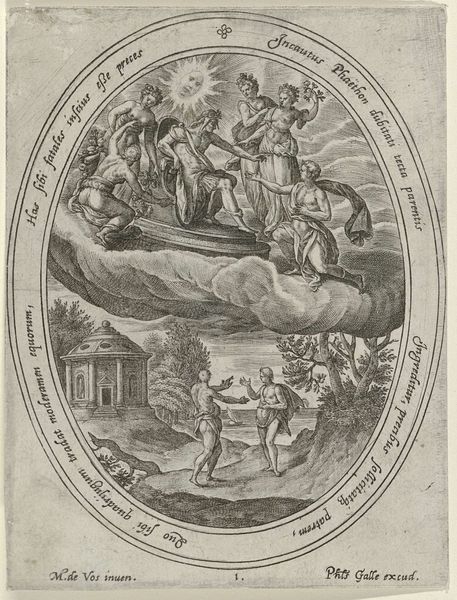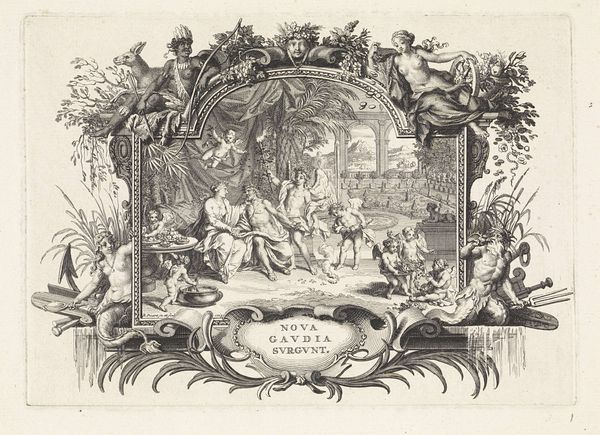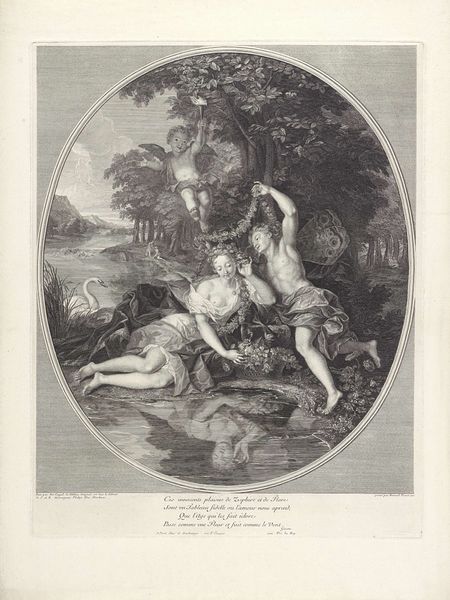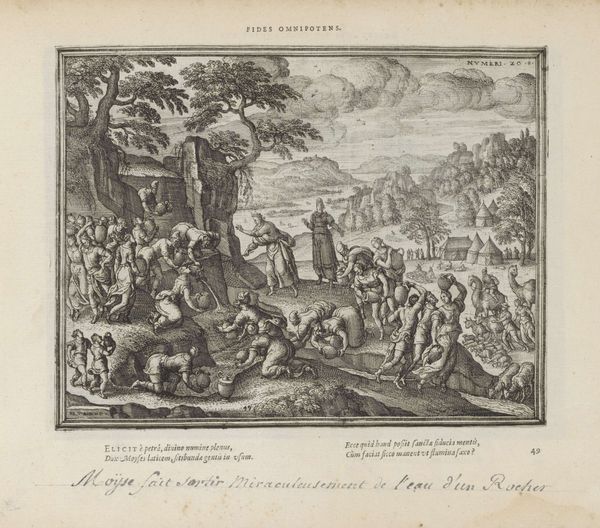
engraving
#
allegory
#
baroque
#
old engraving style
#
figuration
#
line
#
history-painting
#
engraving
#
historical font
Dimensions: height 631 mm, width 590 mm
Copyright: Rijks Museum: Open Domain
Curator: This engraving by Etienne Baudet, titled "Element Vuur," dates to 1695 and presents an allegorical representation of the element of fire. What strikes you most when you first view it? Editor: The dynamism! The scene is overflowing with figures, each rendered with exquisite detail and occupying a very clear spatial relationship. It's meticulously constructed, baroque certainly. There’s a feeling of restless energy. Curator: I agree. Notice the careful arrangement of figures within the circular frame. We see a tripartite division: the celestial realm with the goddess and cherubs, the earthly realm, and below, what appears to be Vulcan's forge, each section carefully delineated by light and shadow. This arrangement reflects classical principles of composition. Editor: And look at how the element of fire manifests in diverse scenarios—from the domestic, to industrious labor in a forge, to cosmic power with a fire-bearing goddess driving her chariot. These are not just visual decorations; these are commentaries on societal functions from royalty to common craft. Note the implied comment on power dynamics, and access to the technology to create this element for good, but it is easily turned towards the tools of warfare. Curator: Absolutely, we have a scene filled with contrasts – powerful figures juxtaposed with more intimate groups centered on daily rituals, as well as celestial deities paired with rough and grimy workers within the depths of a forge. Notice also the allegorical figures that convey certain classical ideals. The line work and hatching employed to create form and depth, particularly in the smoky, subterranean parts of the forge is superb! Editor: It also speaks volumes about 17th-century power structures, where monarchs sought to legitimize their rule by aligning themselves with both divine and earthly energies. Dedicated as it is to King Louis, note how this portrayal reinforces social hierarchies and the divine right of kings, reflecting a desire to project control over natural forces. Curator: Well, by delving into its complex visual language and construction, we've come to see that this Baroque work functions not only as an aesthetic statement but also as a compelling artifact that encodes prevailing attitudes regarding power. Editor: It reminds us that art never exists in a vacuum but actively reflects the socio-political landscapes it inhabits. How interesting to see that conversation unfold.
Comments
No comments
Be the first to comment and join the conversation on the ultimate creative platform.
